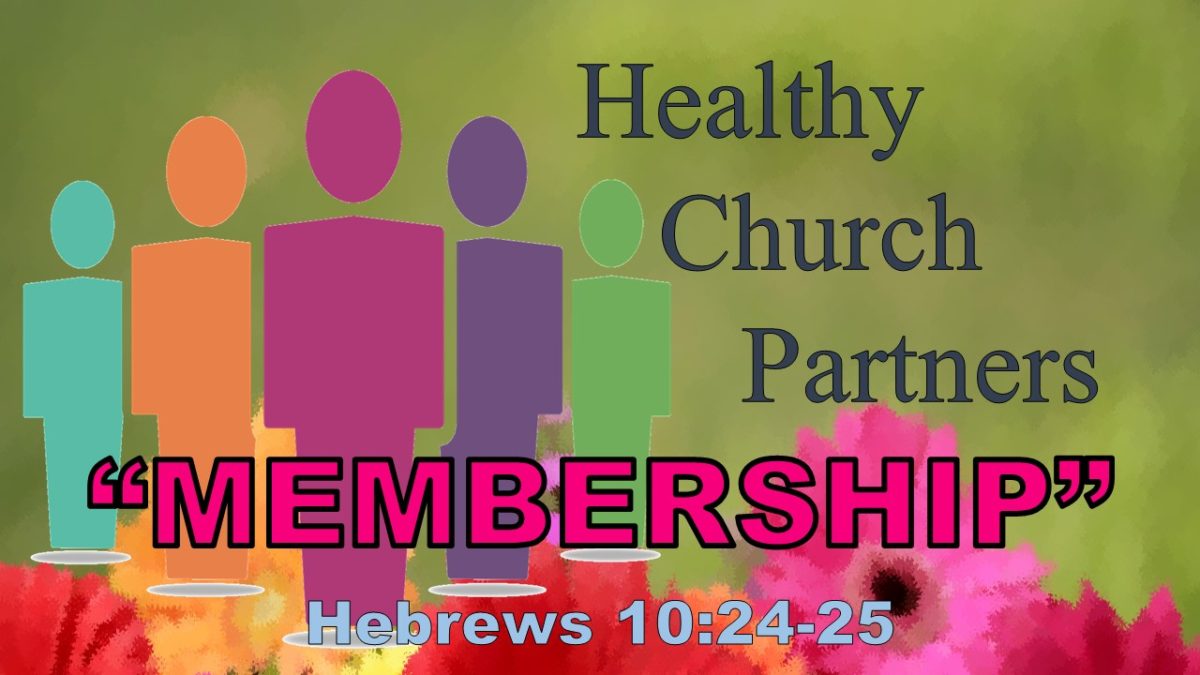The whole idea of membership is in trouble. For one thing, we aren’t “joiners” like we used to be in the days of our grandparents. Compare our grandparents with the Millennial generation—who soon will be just about everybody—and the younger group comes off looking just about post-institutional.
Then, we have the added burden of competing with lots of negative images. Ask around to find out what people really think about local church membership and you’ll likely get descriptions of an inner ring of especially holy people … an exclusive club with privileges … a business with a bottom line, competing for limited resources … or, a group of people who gather to take care of the business operations of the church. Hardly anything to aspire to.
What is local church membership, anyway?
The biblical doctrine of church membership is an especially interesting one, in that we don’t have a passage or verse that says, “This is what membership is, and here’s how to do it in the 21st century.” It is, rather, like the doctrine of the Trinity—not found in chapter and verse, but found through the Scriptures in numerous pictures of God interacting as a unity and in His “Three-ness”. Take away this doctrine, and the whole system comes apart.
So it is with the Bible’s teaching on church membership. It comes to us in pictures of groups of God’s people in particular places committing to meet together under the Lordship of Christ. In Acts 2, we see local church life—teaching, fellowshipping, breaking bread and praying. In Philippians 3, there’s the picture of heavenly citizenship: “… our citizenship is in heaven, and we await a Savior from there.” First Timothy 5 gives us a picture of family: Treat “… older women as mothers, younger women as sisters, in all purity”. First Peter 5 describes the roll of appointed pastor-elders who lead particular groups of people. Matthew 18 describes the work of the local church in disciplining—excluding from membership a professing brother who doesn’t properly represent Jesus: “… whatever you loose on earth shall be loosed in heaven”.
My recent favorite, among these pictures, is Hebrews 10.19-25. We often hear this passage preached to embolden us to come to God shamelessly and with confidence, as individuals. Less often, we hear it preached to describe what local church life should look like.
Hebrews 10.19-25 describes two things that are true: We have confidence to go to God (:19-20), and we have someone to take us to God (:21). All of this is set against the Day of Atonement we read about in Leviticus 16. The priest of the Old Testament would make himself ready for God’s presence through washings and sacrifices. He’d carry the blood of sacrifices through the curtain separating God from everyone else. And, he’d enter God’s presence with fear and trembling, lest his sacrifice be found wanting.
Ah, but here’s the good news! We go to God through the very body and blood of Jesus. And, He’s perfect! And, while the priest would tremble to enter God’s house, we’re ushered into God’s house by the Son Himself, who transforms us (to mix the image) into the very house of God: “… Christ is faithful over God’s house as a son. And we are his house if indeed we hold fast our confidence and our boasting in our hope” (3.6, ESV).
In light of this confidence, we have some things we need to do with other believers in our local fellowships. Notice how, in verses 22-25, the commands grow more specific, more relational, more corporate, and more local. These are local church responses describing what membership looks like.
We’re to draw near to God (:22). We do this in full assurance of faith, consciences cleaned, bodies set aside for God’s purposes. The image here is, likely, that of baptism. It reminds us that our churches should be places where we come without shame. Whatever pathway God has taken to bring us to Himself, we’re clean. “Past is prologue,” as Shakespeare wrote. The church is not a place for shaming. Draw near to God …
We hang on to the Gospel (:23). The local church is the place where we preach the Gospel to each other. It’s not the place where we perfect ourselves, but the place where we hang on to Jesus. And, not only is the Gospel powerful, but it includes all of life. Marriage in trouble? Struggle raising kids? Tempted to sin? Run toward the church where the Gospel is preached. Hang on to the Gospel …
We’re to motivate each other (:24). “Stir one another up” (ESV). We get our word “paroxysm” from the word behind this expression. Think: hydrogen peroxide, bubbling away. We’re to have a godly agenda for each other. Motivate each other …
We’re to meet regularly (:25), ” … not neglecting to meet together as some are in the habit of doing.” While the original readership was having trouble breaking from the synagogue, our modern equivalent is the family who can’t decide on Saturday night whether they’ll come to God with others the next morning. Healthy church partners make the gathering of God’s people a commitment. Meet regularly …
And, we’re to encourage each other till Christ comes (:25). The word “encourage” will be variously translated as urge, exhort, implore, summon, or comfort. Push each other toward the prize, till Christ returns. The local church is the home field of the Christian life. It’s where we remind each other of our victory through Christ and come to God … together.
Healthy church members commit to come to God with others in the local church.
Find someone to talk to and work through the following questions of local church membership.
What is your picture of church membership? Negative? … Positive? … Necessary? Necessary, but for what?
If the thought of joining a local church is negative for you, what objections do you have?
Have you ever thought of Hebrews 10.19-25 as describing the life that we have in Christ together? How does this passage help you think about church membership?
Have you ever heard a sermon on the need to join a church in membership? How has considering this passage in Hebrews changed your thoughts about what joining a church might look like for you?




